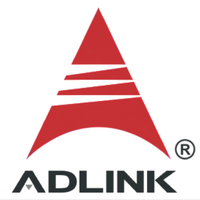New alliance enables high-fidelity real-time analytics and edge-based machine learning in IoT experiments

Kevin Duffy of FogHorn
ADLINK Technology, a global provider of computing solutions, has partnered with FogHorn Systems, a developer of software for industrial and commercial Internet of Things (IIoT) solutions. The partners aim to bring edge intelligence to ADLINK’s groundbreaking Digital eXperiments as-a-Service (DXS) product,DXS IoT digital experiments as-a-service. DXS enables the testing of potential IoT-based endeavours to determine the viability of possible solutions with none of the upfront costs and risk associated with a full solution commitment.
Full IoT solutions conventionally require significant upfront investment, despite, according to industry studies, success rates for such projects only reaching 26%. The vendor-agnostic DXS provides all the resources required to get digital experiments up and running¾including pre-validated hardware, client asset connection, data movement consolidation to bridge the IT/OT gap, enterprise sharing, endpoint management, and field and professional services¾without associated upfront costs.
“ADLINK DXS enables industrial organisations to think big, start small and work fast when integrating IoT-based functionality within new business models or processes,” said Andy Penfold, director of offering management, ADLINK IoT Solutions and Technology.
“It’s very clear an edge-to-cloud approach will emerge as a primary design principle in IIoT production deployments, so adding the leading provider of edge intelligence into the DXS creates, in our opinion, the most advanced testing ground available for IIoT projects.”
FogHorn’s Lightning product portfolio brings an innovative dimension to IIoT by embedding edge intelligence as close as possible to the source of streaming sensor data. The FogHorn platform is a highly compact, advanced and feature-rich edge intelligence solution that delivers unprecedented low latency for onsite data processing and real-time analytics in addition to its machine learning (ML) and artificial intelligence capabilities.
FogHorn’s cloud-agnostic approach offers a fully-integrated, closed-loop edge-to-cloud solution, maximising real-time insights and rapidly iterating ML models to adjust to constantly changing operating conditions.
FogHorn Lightning offers ADLINK DXS customers several benefits, including:
- Real-time, CEP-based streaming analytics enabling faster actionable insights for greater operating efficiencies
- Edge-to-cloud iterative machine learning for higher quality predictive insights
- Radically lower data persistence and transport requirements by processing live data at the source
- Enhanced security posture by eliminates the need to transmit critical OT data across networks

Andy Penfold
“ADLINK is meeting a critical need in the market today with its DXS offering, giving organisations the tools and expertise to model multiple IIoT use cases with little risk or cost,” said Kevin Duffy, vice president of business development at FogHorn.
“FogHorn is a natural extension of this initiative to bring the technical and economic benefits of edge intelligence into the modeling of IIoT projects. We’re very excited to be working with ADLINK.”
ADLINK DXS provides organisations with all the benefits of digital experimentation and enables rapid evaluation of experiments, resulting in blueprints that can be replicated, scaled up and rolled out. The approaches each project individually to determine which areas are likely to be affected by the solution, from ground-level operations to admin and resource allocation. Each digital experiment is defined at the intersection of people, places and affected assets, where most value can be created.
“Our service leverages technologies through all layers of the required hardware, software and network stacks to create viable, scalable and secure IoT solutions,” Penfold added. “These solutions span not only capabilities from ADLINK, but also from partners throughout our ecosystem, and are therefore agnostic in nature.”
Comment on this article below or via Twitter @IoTGN
